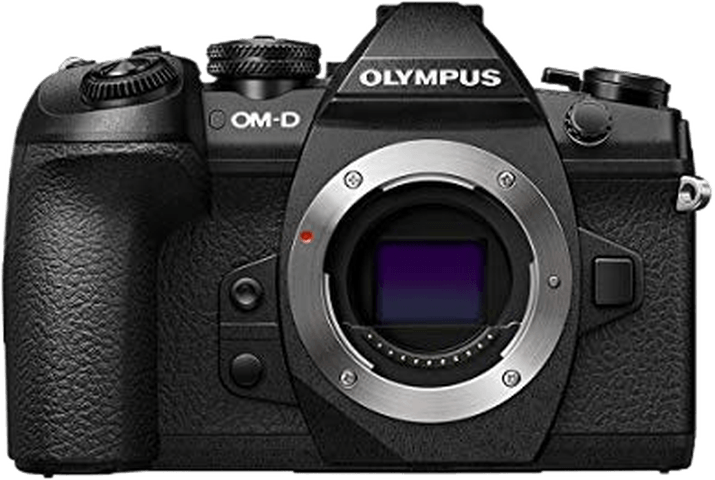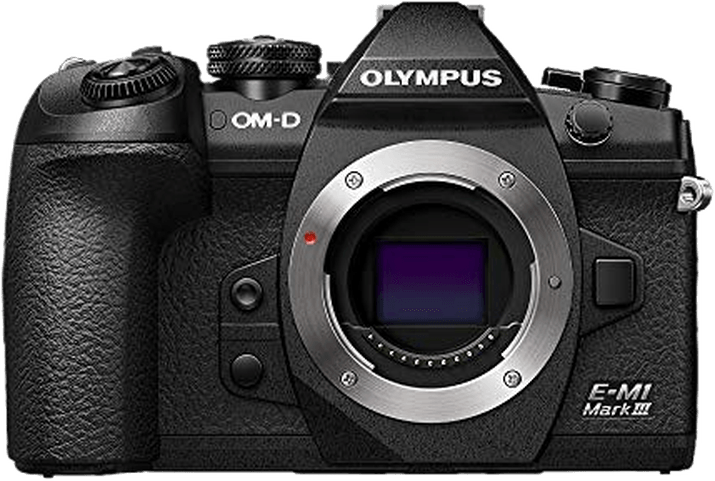Olympus OM-D E-M1 Mark II vs OM-D E-M1 Mark III Comparison
Olympus OM-D E-M1 Mark II

Olympus OM-D E-M1 Mark III

The Olympus OM-D E-M1 Mark III emerges as the winner with a score of 72/100, while the OM-D E-M1 Mark II scores 68/100. Both cameras share common features: they are mirrorless, have the same camera size (134 x 91mm), and similar weights (Mark III is slightly heavier at 580g).
The Mark III boasts a better score due to its more recent release year (2020) and a lower launch price of $1799 compared to the Mark II’s $2000. Despite being an older model, the Mark II still has some advantages, such as being 6g lighter than the Mark III.
Ultimately, the Olympus OM-D E-M1 Mark III is the superior choice, given its better score, more recent technology, and lower price. However, the Mark II remains a viable option for those prioritizing a lighter camera.
Olympus OM-D E-M1 Mark II vs OM-D E-M1 Mark III Overview and Optics
The Olympus OM-D E-M1 Mark II and the Olympus OM-D E-M1 Mark III both receive a score of 68/100 for their optics, showing that they have many similarities in their specifications. Both cameras feature a 20-megapixel CMOS sensor, a Micro Four Thirds sensor size, and a Micro 4/3 lens mount. They also have the same shooting speed of 60 frames per second and share an identical DXOMARK score for the sensor at 80. Additionally, both cameras come with built-in image stabilization.
Despite sharing the same score, the E-M1 Mark III has a slight edge over the E-M1 Mark II due to its newer TruePic IX processor. This updated processor allows for improved image processing and noise reduction, leading to better image quality in certain conditions. The E-M1 Mark III also benefits from the latest features and technology that Olympus has to offer.
On the other hand, the E-M1 Mark II has a slightly higher megapixel count at 20.4 compared to the 20 megapixels of the E-M1 Mark III. This difference may provide a marginal advantage in image resolution, but it is unlikely to be noticeable in most situations. Both cameras still produce high-quality images that cater to various photography needs.
Given that the optics of these two cameras are nearly identical, the choice between the Olympus OM-D E-M1 Mark II and the Olympus OM-D E-M1 Mark III comes down to personal preference and budget. The E-M1 Mark III offers a newer processor and updated features, while the E-M1 Mark II has a slightly higher megapixel count. Ultimately, both cameras provide excellent optics and performance for photographers of all levels.
Olympus OM-D E-M1 Mark II vs OM-D E-M1 Mark III Video Performance
The Olympus OM-D E-M1 Mark III outperforms the Olympus OM-D E-M1 Mark II in video capabilities with a score of 83/100 as compared to the latter’s 70/100. Both cameras share certain features, such as 4K maximum video resolution and 4096 x 2160 maximum video dimensions. Additionally, both cameras have time-lapse functionality built in, making them suitable for capturing stunning time-lapse videos.
The E-M1 Mark III surpasses the E-M1 Mark II with its superior maximum video frame rate of 60fps, double the E-M1 Mark II’s 24fps. This higher frame rate enables smoother video playback and provides more flexibility for slow-motion effects in post-production. This significant advantage makes the E-M1 Mark III a more appealing choice for videographers who require high-quality video performance.
On the other hand, the E-M1 Mark II does not offer any notable advantages over the E-M1 Mark III in terms of video capabilities. Its lower frame rate puts it at a disadvantage compared to its successor. However, the E-M1 Mark II may still be suitable for casual video recording or for those who do not require a high frame rate for their projects.
Taking all factors into consideration, the Olympus OM-D E-M1 Mark III stands out as the better option for videography due to its higher video score and superior maximum video frame rate. The E-M1 Mark II, while still a capable camera, falls short in comparison to the E-M1 Mark III in this aspect. Therefore, those seeking a camera with better video performance should opt for the Olympus OM-D E-M1 Mark III.
Olympus OM-D E-M1 Mark II vs OM-D E-M1 Mark III Features and Benefits
The Olympus OM-D E-M1 Mark III outperforms the Olympus OM-D E-M1 Mark II with a feature score of 83/100, compared to the Mark II’s 70/100. Both cameras share several specifications, including a 3-inch screen size, a screen resolution of 1,037,000 dots, a touchscreen, a flip screen, and WiFi capabilities. However, the Mark III surpasses the Mark II in certain areas, while the Mark II has minimal advantages over the Mark III.
The Mark III’s higher score results from its additional Bluetooth connectivity, which the Mark II lacks. This feature allows users to easily transfer files and remotely control the camera. Consequently, the Mark III provides a more convenient and seamless shooting experience.
On the other hand, the Mark II does not offer any significant advantages over the Mark III. Both cameras share the same screen size, resolution, and other features. Therefore, the Mark II does not outshine the Mark III in any specific aspect.
Considering these points, the Olympus OM-D E-M1 Mark III is a superior camera compared to the Olympus OM-D E-M1 Mark II. Its higher feature score and the inclusion of Bluetooth connectivity make it a more desirable choice for photographers seeking advanced features and greater convenience. The Mark II, with its lower score and lack of notable advantages, does not provide a compelling reason for potential buyers to choose it over the Mark III.
Olympus OM-D E-M1 Mark II vs OM-D E-M1 Mark III Storage and Battery
The Olympus OM-D E-M1 Mark III outperforms the Mark II in storage and battery with a score of 71/100 compared to the Mark II’s 57/100. Both cameras have two memory card slots and accept SD, SDHC, and SDXC cards. However, the Mark III has an advantage with one slot supporting the faster UHS-II standard, providing quicker data transfer for high-resolution images and videos.
In terms of battery life, the Mark II offers slightly more shots per charge at 440, while the Mark III provides 420. Both cameras utilize the same BLH-1 battery type. The Mark III, however, features USB charging, allowing for more convenient and flexible charging options.
Considering these aspects, the Mark III holds an advantage in storage and charging capabilities, while the Mark II has a minor edge in battery life. The faster UHS-II compatibility and USB charging make the Mark III a more versatile choice for photographers who prioritize storage and power options.
Olympus OM-D E-M1 Mark II vs OM-D E-M1 Mark III Alternatives
If you’re still not sure which camera to go for, here are some more popular comparisons to inspire you:
- Sony a7 IV vs Sony a7R IV
- Canon EOS R7 vs Olympus OM-D E-M1 Mark III
- Canon EOS Rebel T8i / 850D vs Nikon D3500
- Fujifilm GFX 50S II vs Fujifilm GFX100S
- Fujifilm GFX 50S II vs Olympus OM-D E-M10 Mark IV
- Fujifilm X-E3 vs Sony a6300
- Fujifilm X-S10 vs Olympus OM-D E-M1 Mark III
- Fujifilm X-T5 vs Olympus OM-D E-M5 Mark III
